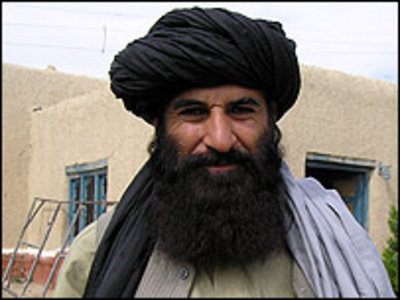|
|
|
South Waziristan Taliban chieftain Haji Omar Khan. |
The US killed a senior Taliban leader in an airstrike in the Mir Ali region in North Waziristan, Pakistan, on New Year’s Eve, 2009.
Haji Omar Khan, a senior Taliban leader in South Waziristan who strong ties to Mullah Omar, was killed in the Dec. 31, 2009, airstrike on a safe house in the town of Machi Khel, according to his family. The body is being repatriated to his home town in South Waziristan.
The New Year’s Eve strike is also said to have killed the son of Karim Khan, the tribal leader who ran the safe house, and two other people, according to The Frontier Post.
US intelligence officials contacted by The Long War Journal would neither confirm nor deny Haji Omar’s death, but one official did say Haji Omar is being targeted.
The US previously targeted Haji Omar in a strike on Oct. 26, 2008. He was rumored to have been killed but the report was never confirmed.
Haji Omar was based in Shakai in South Waziristan, before the Pakistani military launched an operation in mid-October. He and his followers then sought shelter in North Waziristan. This occurred despite the peace agreement between the government and the North Waziristan Taliban stating they would not shelter Taliban fighters fleeing the South Waziristan operation.
A long-time Taliban leader
Haji Omar was based in the town of Shakai in South Waziristan. Like many Taliban leaders, he earned his stripes by battling against the Soviet Red Army in Bagram and Kabul, Afghanistan, during the 1980s. He was wounded several times but continued to return to the fight.
After the Soviet withdrawal, Omar left Afghanistan for Pakistan as the Afghan warlords battled for power. He returned after Mullah Omar, the leader of the Afghan Taliban, took power in 1996.
Haji Omar forged close links with Mullah Omar while serving as one of his senior lieutenants. He lived in Kandahar and took an Afghan wife. After the US invasion of Afghanistan in 2001, Omar fled to his base in South Waziristan. From there he carved out his enclave and worked to build the Pakistani Taliban as a formidable fighting force. His fighters cross the border to fight US and allied forces in Afghanistan.
Haji Omar’s goal was the establishment of a Taliban Islamic sharia state in Pakistan’s tribal areas as well as in Afghanistan. To accomplish his goal in South Waziristan, Omar admitted that his forces target and “slaughter” opposing tribal leaders that he labels as US spies.
“Yes, we treat all American allies as enemy,” he told the BBC in 2006. “We have caught many people who were trying to help the Americans, either directly or through Pakistan. We do not waste our bullets on them. We slaughter them.”
Haji Omar had strong ties to Pakistani Taliban leader Baitullah Mehsud, who was killed in a US airstrike in August 2009, as well as to the powerful Haqqani family, which is run by Jalaluddin and Siraj Haqqani. Haji Omar served as a member of a so-called tribal peace committee to negotiate peace accords with the Pakistani government from 2004 to 2006.
He maintained close links with Mullah Omar, as well as with al Qaeda. His tribal areas served as a safe haven for al Qaeda leaders and fighters. His brother, Noor Islam Khan, is also a Taliban leader with close ties to Arab and Uzbek al Qaeda members. In an interview with the BBC in 2006, Haji Omar denied he had links to “the Arabs.”
In Oct. 2007, Haji Omar threatened former Prime Minister Benazir Bhutto’s life as she prepared to return home from exile and reenter the political sphere. “She has an agreement with America. We will carry out attacks on Benazir Bhutto as we did on General Pervez Musharraf,” he said. Bhutto was killed two months later in a massive suicide attack in Rawalpindi.









3 Comments
Another one bites the dust, good intel I am sure was his downfall!!!! We can only hope that it gets better!
Nice strategy to hit N.Waziristan with hellfires. Taliban limping already, to kill it off in Pak is vital.
I wonder if this guy was responsible for the suicide attack on the CIA?